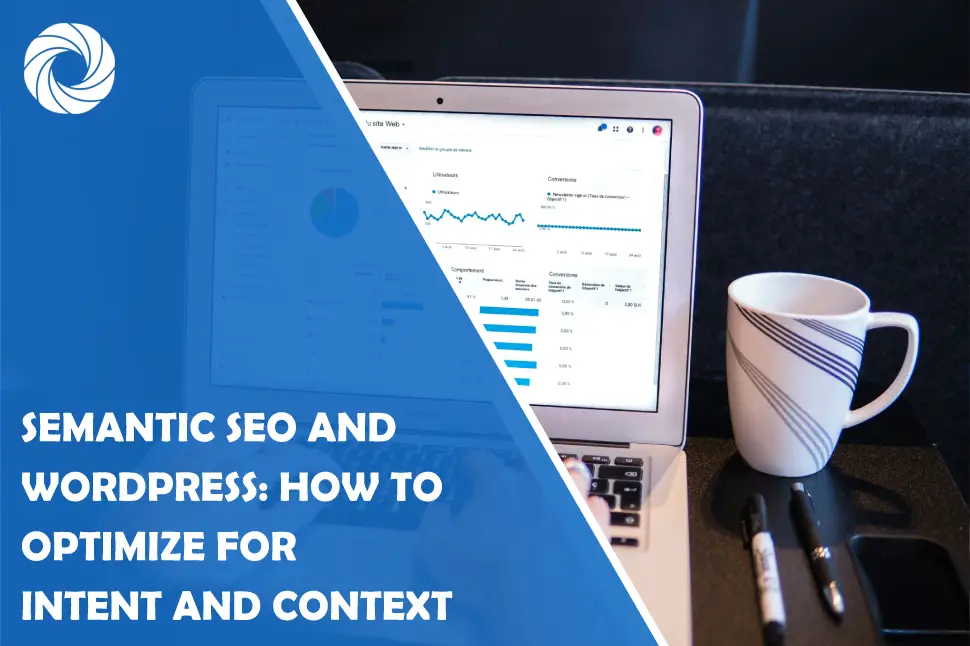Have you ever considered the intricate dance between words and their hidden meanings? Remember when keyword stuffing was rampant? Now, with generative AI on the rise, it’s increasingly important to focus on intent and your domain expertise. Like a carefully choreographed ballet, every phrase in your content has the potential to leap with intent and pirouette with context. But how do you ensure that your audience truly feels the rhythm of your message?
Understanding the subtitles of semantic SEO is akin to learning the language of the web. But what does it mean to optimize your content for intent and context? As per this SEO expert organization in Philadelphia, SEOBrand.com, “SEO helps to bring in relevant organic traffic to your website, while CRO helps to convert that traffic into customers.
Understanding Semantic SEO
Imagine for a moment your website being the life of the party. It's not just about what you say; it's how you say it, with all the winks, nudges, and knowing grins. That's Semantic SEO—a masterful mix of meaning, intent, and context.
So, what exactly is this mystical beast? Simply put, Semantic SEO is the practice of building more meaning into the words we use to communicate with our AI overlords, aka search engines. Sure, they may not chuckle at our puns just yet, but they're learning the dance between context and content. Thus, focusing on user intent isn't just important; it's imperative.
Optimizing WordPress for Semantic SEO
Now, donning our metaphorical hard hats, let's deep dive into WordPress, the construction site where your Semantic SEO dreams will take shape.
Choosing a suitable theme and plugins can feel a bit like speed dating: too many choices, too little time, and a lot riding on a good match. You want the combo that whispers sweet nothings to search engines while wowing your visitors with its slick style and rapid responses.
Content hierarchy? Oh yes. Your headers and subheadings aren't just pretty faces. They orchestrate your SEO symphony, harmonizing keywords and context to make Google sing your praises.
Have you been talking to your images? You should. Image optimization is like setting up your visuals with a wealthy blind date—they need to “speak” Search Engines if you’re catching my drift.
And let's not skim over schema markup—because Google loves a site that comes with instructions. It's like a secret handshake that gets you into the VIP area of search results.
Creating Semantic Content
Keyword research sounds dreary until you realize it's basically eavesdropping on your customers' inner thoughts. And who wouldn't want a fly-on-the-wall moment with their audience?
Then, there's the writing of glorious content—marrying the scientific precision of word placement with the art of natural language. It's like penning a sonnet that also solves equations (Da Vinci would be proud).
But you must tread carefully—inviting contextually related keywords to the party without crowding the room. It's the difference between a sophisticated mixer and an all-you-can-eat buffet.
Ah, the web of linking! Each internal link you weave is a subtle nod to another conversation on your site, while external links are akin to making friends with the cool kids (other authorities in your space).
Technical Considerations
Delving into the nitty-gritty technical side of your website isn't just about flaunting your geek chic; it's crucial for Google's seal of approval. Here's the skinny on tech considerations in bullet points, but let’s keep it entertaining:
- Page Load Speed: Faster than a teenager responding to a text! If your website takes longer to load than it does to make instant noodles, you might as well wave goodbye to your visitors—and your search rankings.
- Mobile Optimization: Because pocket-sized web browsing is all the rage. If your website can’t contort itself beautifully onto a smartphone screen, it's practically prehistoric.
- SSL Certificate: Think of it as garlic to vampires; it keeps the spooks (hackers) away. A secure website is like a cozy blanket that warms Google’s robotic heart.
- Structured Data: Nothing says “I love you” to a search engine more than structured data. It's the difference between a slapdash sticky note and an elegantly typed itinerary for crawling your pages.
- 404 Errors: These need to be squashed like faux pas at a dinner party. An incredible 404 page turns an awkward “Oops!” into a clever “Aha!” moment.
- Sitemap Submission: Submitting your sitemap to search engines is like RSVPing to the hottest event in town. Don’t let your site be the one standing outside in the cold.
With all this talk about optimization, we need numbers to back up our swagger. We trust analytics like cats count that one spot of sunlight on the carpet—it never lies. Watching performance metrics is like checking your speedometer—you need to know if you’ve got to pump the gas or ease off a tad.
A/B testing headlines, analyzing clicks and bounces—it's like turning your site into a lab where every click helps you fine-tune further. It's the empiricist’s playground, really.
